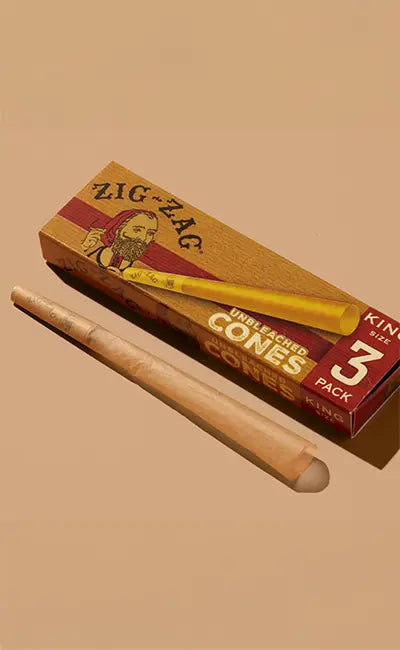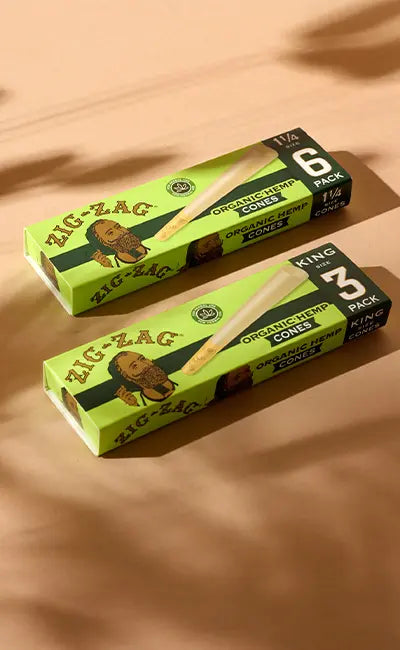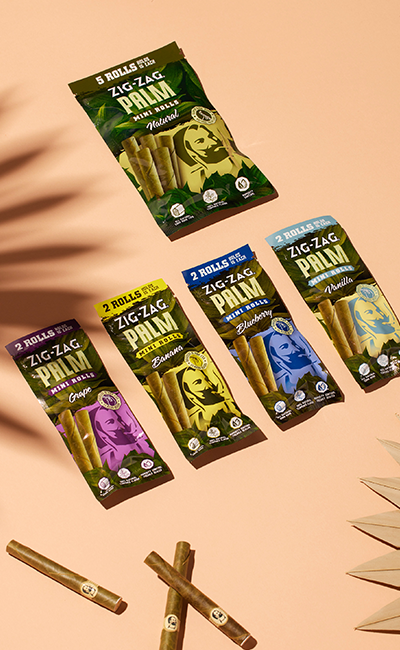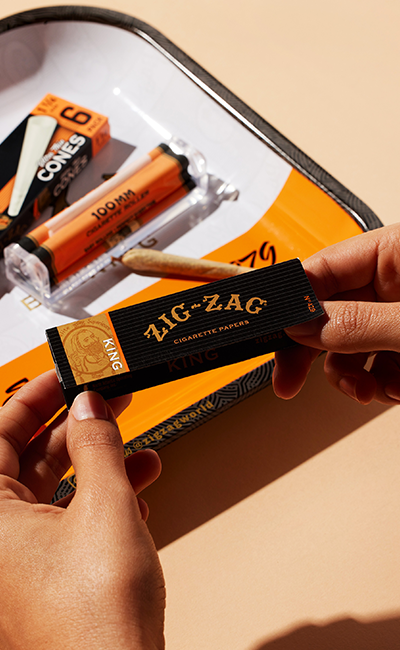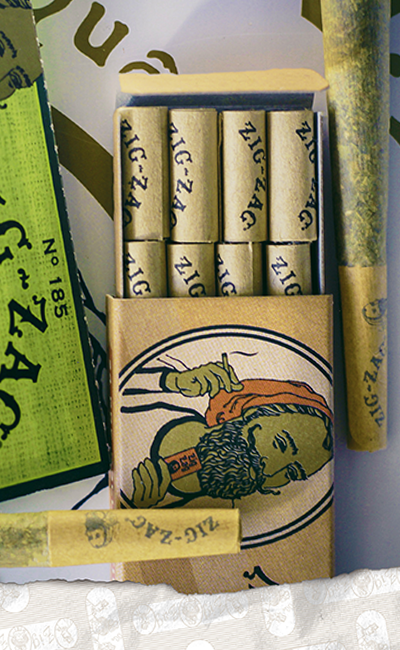Rolling the perfect cone is an art form, revered and sought after by smoking enthusiasts around the globe. Whether you're a novice just beginning your journey or a seasoned pro looking to refine your technique, mastering the craft of rolling can elevate your smoking experience to new heights. This cone rolling guide is designed to explain the process, offering rolling paper tips and tricks that cater to everyone from the first-timer to the experienced roller. From selecting the right materials to achieving the ideal shape and burn, we'll cover everything you need to know to create perfect cone tips that are not just functional, but also impressive.
The Foundations of Cone Rolling
Rolling 101: Understanding the Basics
The journey to crafting the perfect cone begins with mastering the basics. Rolling cones requires a blend of technique, patience, and the right approach. The goal is to transform a flat piece of rolling paper into a conical masterpiece that provides an even and satisfying smoke. Understanding how to distribute your material evenly, secure the cone without tearing the paper, and achieve a tight roll are fundamental skills every roller should possess.
Essential Techniques for Beginners
For beginners venturing into the world of hand-rolled cigarettes or joints, mastering a few fundamental techniques can transform this seemingly complex task into a straightforward and enjoyable process. By concentrating on these core skills, newcomers can quickly improve their rolling abilities. Here’s an examination of each essential technique:
-
Creating a Filter: The initial step involves crafting a filter or tip from a small piece of cardboard or specialized filter material. This component is not just about keeping the material from falling out; it also plays a crucial role in stabilizing the structure of the roll, enhancing airflow, and ensuring a smoother smoking experience. The filter acts as a barrier against any small particles that might otherwise be inhaled.
-
Proper Paper Handling: The way you hold the rolling paper significantly affects the ease with which you can roll it. The goal is to achieve a balance between a gentle grip that allows the paper to move as needed, and firm control to guide its shape and tightness. Beginners should practice holding the paper in such a way that it's secure yet pliable, preparing it for the filling and rolling process that follows.
-
Even Filling: Uniform distribution of your smoking material is key to achieving an even burn and a smooth draw. This step involves carefully spreading out the material across the length of the paper, paying attention to maintaining consistency in density. Avoiding lumps and unevenness helps in preventing tears during rolling and ensures the finished roll burns evenly from start to finish.
-
Pinching and Rolling: This crucial technique involves gently pinching the paper around the filled material, and then using a rolling motion to shape the cigarette or joint. The objective is to tightly encase the material in the paper, creating a compact roll that burns consistently. Mastering the pinch-and-roll method is essential for producing a well-formed product that doesn’t unravel or burn unevenly.
Developing proficiency in these techniques requires patience and practice, but the effort pays off in the form of perfectly rolled cigarettes or joints that enhance the smoking experience. Each step, from preparing the filter to the final roll, contributes to the overall quality and enjoyment of the smoke, making these skills invaluable for anyone looking to excel in the art of rolling.
Selecting the Right Materials for Your Cone
Not all rolling papers are created equal, and the choice of material can greatly influence your rolling experience and the quality of your smoke. Paper cones come in various sizes and compositions, including hemp, rice, and more traditional wood pulp options. Each type has its characteristics, such as burn rate and flavor influence. For beginners, thicker papers might be easier to handle, but as your skills improve, experimenting with ultra-thin papers can offer a more authentic taste and smoother smoking experience.
The Significance of Cone Size and Shape
King-size papers are ideal for longer sessions or sharing, while smaller papers suit those looking for a quicker smoke. The conical shape allows for a larger tip, which gradually tapers to a smaller end, providing a consistent burn and a cooler smoke as it progresses. Understanding how to craft cones of different sizes and shapes allows for customization based on personal preference or the occasion, making each rolling session both versatile and rewarding.
How to Craft Perfect Cones
The Art of Applying the Right Pressure
Applying the right amount of pressure is critical when rolling cones. This involves gently compacting the material as you roll, ensuring it's tight enough to maintain its structure but not so tight that it impedes airflow. The goal is to find a balance that allows for a smooth, even burn without any blockages. This skill becomes intuitive over time, with the pressure adjusted based on the texture of the material being rolled.
Utilizing Tools for Consistency and Precision
Enhancing the precision and consistency of your rolled cones can significantly elevate your smoking experience. By integrating specific tools into your rolling regimen, you can achieve professional-level quality with minimal effort. Below are the tools designed to perfect the craft of cone rolling:
-
Cone Filler: This tool revolutionizes the way you fill cones by streamlining the distribution of your smoking material. It ensures an even spread throughout the cone, eliminating pockets that can lead to an uneven burn. The cone filler is especially useful for those looking to save time while ensuring each cone is packed to perfection.
-
Rolling Machine: For those who may struggle with manual rolling or simply prefer a quicker, more efficient method, a rolling machine is invaluable. It guarantees a tight, even roll every time, mimicking the precision of a seasoned roller. This tool is a game-changer for achieving consistency in tightness and shape with minimal effort.
-
Rolling Mat: A rolling mat acts as both a workspace and a guide for rolling by hand. It offers a non-slip, flat surface that can feature guidelines or grooves to assist in rolling cones of consistent size and shape. The mat is particularly helpful for beginners or anyone looking to improve their manual rolling technique.
-
Packing Stick: After rolling, the packing stick is used to evenly compact the material inside the cone. This step is crucial for preventing air pockets and ensuring a smooth, even burn. A packing stick allows for fine adjustments to the density of the material, catering to personal preferences for draw resistance and burn rate.
Incorporating these tools into your routine not only makes the process of crafting cones more efficient but also significantly improves the quality of the end product. Whether you're a novice or an experienced smoker, these tools can help you achieve a consistently pleasurable smoking experience by enhancing the consistency of your rolls.
Material Matters: Choosing Your Papers
The Impact of Paper Type on Burn Rate
Different materials burn at different rates, influencing how long and how smoothly your cone will smoke. For those seeking a leisurely session, slow-burn rolling papers made from hemp or rice offer an ideal solution. These materials are designed to burn more slowly and evenly, providing a consistent smoking experience from start to finish.
The Benefits of Natural Gum Lines
The adhesive strip, or gum line, is another essential factor to consider. Natural gum papers use a strip of natural gum arabic, derived from the sap of acacia trees, which is both safe and effective for sealing cones. This type of gum is preferred for its purity and its minimal impact on the flavor of the smoke. A good quality gum line ensures that your cone stays securely rolled without the need for excessive licking, which can compromise the integrity of the paper.
Overcoming Common Rolling Challenges
Tips for Preventing Tears During Rolling
Tears in the paper are a common frustration that can ruin a nearly completed cone. To minimize this risk, handle the paper as gently as possible and avoid overfilling. If you're prone to tearing the paper, consider switching to a thicker or more durable material until your technique improves. Keeping your fingers dry and free of any sticky material before starting can also help prevent the paper from weakening.
Adjusting for Humidity and Paper Condition
Humidity can affect the condition of your rolling papers, making them more prone to tearing or difficult to stick. Storing your papers in a cool, dry place can help maintain their integrity. If you live in a particularly humid climate, consider using a
rolling tray or mat that can help absorb some of the moisture from your fingers and the environment. Additionally, a quick pass of a lighter below the paper (not too close to avoid burning) can help dry out slightly damp papers just before rolling.
How to Correct Mistakes Without Starting Over
Mistakes are inevitable, especially when you're still perfecting your technique. If your cone isn't shaping up as you'd like, don't be afraid to unroll it and start again. Rolling papers are forgiving, and it's often possible to salvage the material and try again. For minor tears, a small piece of another rolling paper can be used as a patch to seal any holes without needing to discard the entire cone.
DIY Cone Crafting and Personalization
Homemade Cone Solutions for the Enthusiast
Creating homemade smoking cones begins with selecting the right paper and filter. Beyond the standard choices, adventurous rollers can explore a variety of textures, thicknesses, and even flavors of paper. Crafting your cones at home means you can experiment with different combinations, finding the perfect balance that suits your taste and smoking style. This hands-on approach not only enhances the smoking experience but also fosters a deeper appreciation for the craft of rolling.
Creative Paper Cone Tricks and Tips
There's an art to rolling that goes beyond the basic technique. One popular trick is to use two papers glued together at a slight angle to create a larger, more robust cone that can hold more material. Additionally, experimenting with custom-printed designs can add an extra dimension to your smoking experience, making each session unique. For those looking to truly personalize their smoke, crafting filters from business cards or other sturdy paper featuring personal logos or messages can add a signature touch.
The Fun of Mixing and Matching Flavors and Papers
For the adventurous smoker, mixing and matching different flavors of paper with various herbs or tobaccos can create unique combinations that elevate the smoking experience. Flavored papers can complement or contrast the natural flavors of the smoke, offering endless possibilities for experimentation. Whether you're seeking a hint of sweetness with a fruity paper or a refreshing aftertaste with a minty one, the right combination can turn each smoking session into a discovery.
Easy Cone-Making Process
Strategies for Quick and Efficient Cone Rolling
Developing a personal rolling strategy that combines speed with precision can make all the difference. This might involve pre-preparing filters or tips, laying out your materials in advance, or mastering a specific rolling technique that minimizes fiddling and readjustments. Some rollers find that preparing multiple cones in a single sitting, rather than rolling each one as needed, can save time in the long run.
Tips for Storing and Preserving Pre-Rolled Cones
Once you've mastered the art of rolling perfect cones, proper storage becomes essential to preserving their quality. Humidity-controlled containers can keep your cones dry and intact, preventing them from becoming brittle or overly moist. For those who roll in bulk, dividing the cones into smaller batches for storage can help maintain their freshness, ensuring that each smoke is as good as the last.
The future of cone rolling is bright, with innovations in materials, tools, and techniques continually expanding the possibilities. As you master the basics and explore advanced tips for rolling tight cones, you'll find that crafting the perfect cone becomes not just easier, but also more rewarding. So, keep practicing, stay curious, and embrace the endless potential of cone rolling. With time and dedication, you'll not only achieve the perfect roll but also elevate your smoking pleasure to new heights.



